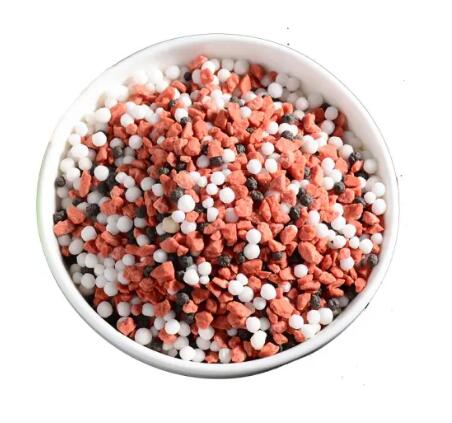Jul. 17, 2023
Chemicals
NPK fertilizer, also known as compound fertilizer, is a blend of three primary nutrients: nitrogen (N), phosphorus (P), and potassium (K). The process of blending NPK fertilizer involves combining these essential elements in specific ratios to create formulations that cater to different plant nutrient requirements. In this article, we will delve into the process of blending NPK fertilizer, highlighting the steps involved and the importance of achieving precise nutrient ratios for optimal plant growth and yield.
Raw Material Selection: The first step in blending NPK fertilizer is selecting the raw materials that will serve as the sources of nitrogen, phosphorus, and potassium. Common nitrogen sources include ammonium nitrate, urea, or ammonium sulfate. Phosphorus can be derived from materials like superphosphate or monoammonium phosphate, while potassium sources may include potassium chloride or potassium sulfate. The selection of high-quality raw materials is crucial to ensure the desired nutrient content and avoid impurities that could hinder plant growth.
Grinding and Granulation: Once the raw materials are selected, they go through a grinding process to reduce their particle size and improve their blending characteristics. Grinding ensures uniformity and facilitates the subsequent blending stage. After grinding, the materials are often granulated to form particles of consistent size and shape. Granulation improves the handling and spreading properties of the fertilizer, making it easier to apply evenly to the soil.

Proportioning and Blending: The heart of the NPK blending process lies in proportioning and blending the individual nutrient sources in precise ratios. These ratios are determined based on the specific nutrient requirements of different crops or plants. Advanced blending systems with computer-controlled equipment are used to ensure accurate and uniform mixing. The materials are typically measured and fed into the blending equipment, where they are thoroughly mixed to achieve a homogenous NPK fertilizer blend.
Quality Control and Testing: Quality control is a crucial aspect of NPK fertilizer blending. Samples are regularly taken during the blending process to assess nutrient content and verify that the desired ratios are being achieved. Laboratory testing is conducted to analyze the samples for nutrient concentrations, ensuring compliance with regulatory standards and meeting the specific needs of different crops or plants. Quality control measures help maintain consistency and ensure the effectiveness of the final NPK fertilizer product.
Packaging and Distribution: Once the blending process is complete and the NPK fertilizer has undergone quality control checks, it is ready for packaging. The fertilizer is packaged in bags, sacks, or other appropriate containers, labeled with essential information such as nutrient content, recommended application rates, and handling instructions. Proper packaging ensures the preservation of the fertilizer's nutrient integrity. The packaged NPK fertilizer is then distributed to agricultural retailers, nurseries, and farmers for use in various agricultural and horticultural applications.
Conclusion: The process of blending NPK fertilizer involves selecting high-quality raw materials, grinding and granulating them, proportioning and blending the nutrients in precise ratios, conducting quality control checks, and packaging the final product for distribution. Each step is critical in ensuring that the NPK fertilizer contains the necessary nutrients in the right proportions to support healthy plant growth and maximize crop yields. By understanding the process of blending NPK fertilizer, agricultural professionals can make informed decisions about selecting and using fertilizers that align with their specific crop nutrient requirements.
Previous: What is difference between plastic emulsion and acrylic emulsion?
Next: Enhancing Embroidery Artistry: Exploring the Wonders of Embroidery Adhesive
If you are interested in sending in a Guest Blogger Submission,welcome to write for us!
All Comments ( 0 )